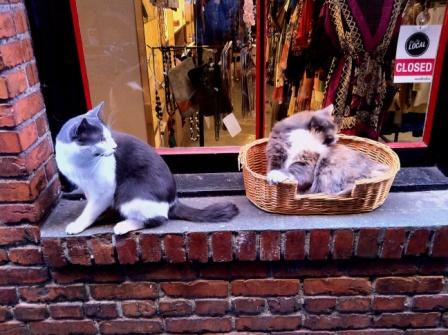100 MILE DESIGN – CHECKPOINTS
Moving into my third chapter as a designer with both hope and concern, has placed some community based timeless values in greater focus and importance and these 10 decision making checkpoints that I use are worth sharing for your contemplation.
- Does the planning process produce something made locally, minimizing transportation and energy consumption? Simple choices can have results that affect both our planet and our own backyard.
- Are we acting as if we plan to stay here? Does the design utilize materials that are renewable? If what we use to build is finite and expendable, then what are we leaving for future generations?
- When we need raw materials, can we take them without eliminating habitat, or irreversibly harming the natural environment? Is the water still clean and the air fresh; are the resources which we feel we need, truly sustainable?
- When nothing else will replace plastics, aluminum or other material potentially harmful to our ecosystem, then can we use recycled or reclaimed materials? Petrochemical based materials or metals like aluminum, should be reused at the end of each phase of their current utility to minimize harm.
- Self preservation and concern for everyone who will contact the material and design choices we make, means that we must always select non-toxic ingredients. Responsible designers today follow the Living Building Material Guidelines and do not specify any red listed material that has even the smallest chance of being carcinogenic, as so many modern and man-made materials have proven to be, because safe and healthy building and design alternatives are available.
- Manufactured items should minimize waste, eliminate pollution and have no toxic emissions. This trend is growing locally and internationally and we seek out and support local and international leaders in sustainable manufacturing.

- When goods are to be moved, can we minimize packaging and package in ways that can be recycled and reused? One of the largest components of landfill waste is simply packaging, the result of poor planning and bad habits, both of which can be greatly improved with good life cycle design.
- To lessen the myths around ‘expensive and finite’ energy, promoted with great delight by energy producers and utilities, and with common sense and applied intelligence, we can design and demand tools and machines that are energy efficient. Buckminster Fuller once told me directly as a student, “We have no energy crisis; we simply have an ignorance crisis.”
- “Have nothing in your house that you do not know to be useful, or believe to be beautiful” William Morris one of the philosophical founders of the British Arts & Crafts Movement. The lasting value of civilizations’ great antiquities teaches us that we should strive to create works that last for a long time. There are so many justifications for this from embedded carbon footprints to efforts expended and the maintenance of intrinsic social values.
- At the end of the utility phase of an object we have created, can it be recyclable or is it biodegradable? Can we create cradle to cradle products? If they do not meet these criteria, then why would we create these objects in the first place? We can and must do better than we have recently but our hope lies all around us in the detritus of history, the biodegraded waste of previous civilizations which are now compost for life forms today. Only our society in all of history has produced materials that do not naturally decompose over time and that cannot be absorbed back into nature without toxic effects. Why are we doing this?
These are some checkpoints for an artist, designers, architects and engineers today, that is those of us who plan for the use of materials from their extraction through to the end of their utility. We should check these guideposts along the way to ensure that our generation does a better job of steering our local communities, and through our behavior within a new green economy, we can benefit the planet and the life of our communities where we live.



Leave a Reply
Want to join the discussion?Feel free to contribute!